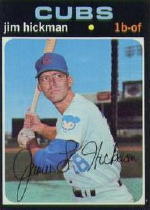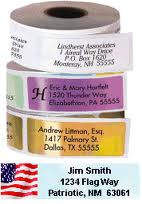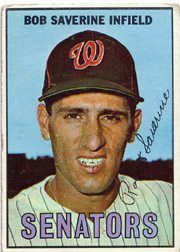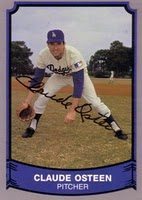
I watch the All-Star Game yearly.
The first Mid-Season Classic I remember was from 1970.
That’s why I was delighted that Jim Hickman and Claude Osteen each shared their moments with me.
These two letters are worth an encore.

I watch the All-Star Game yearly.
The first Mid-Season Classic I remember was from 1970.
That’s why I was delighted that Jim Hickman and Claude Osteen each shared their moments with me.
These two letters are worth an encore.
I wouldn’t have tried such a feat, but I’m glad they did.
A tip of the collector cap to authors Tom Clavin and Danny Peary, the brave souls behind Gil Hodges: The Brooklyn Bums, The Miracle Mets, and the Extraordinary Life of a Baseball Legend (New American Library/Penguin Books, $26.95).
The authors interviewed 130 people to reconstruct the biography of Hodges, who wasn’t the most talkative man of his baseball generation. While Clavin and Peary quote from published work, they discovered quickly that reporters couldn’t count on Hodges for Casey Stengel-like quips or fiery criticisms of players.
Nevertheless, the book is a winner in showing Hodges as baseball’s heroic “Quiet Man.”
One fan, a 1950s teen, told the authors of the “John Wayne aura” that Hodges radiated, while saluting the Brooklyn first sacker for signing autographs and chatting with fans after games.
A seven-year-girl in the midst of a six-month stay in the hospital’s local polio ward remembered Hodges. When the kids sang Take Me Out to the Ballgame when the Dodgers came to visit, he scooped up the girl and danced with her when she shouted “Dodgers!” during the song. “Sixty years later, I remember that. I needed the hug Gil gave me when we danced.”
Teammate Carl Erskine talked about how Hodges would blow kisses to his wife after home runs. It seems she coached him out of a 1950 batting slump. Amazingly, Erskine mentions a few pages later that the first baseman’s savvy side — how he would rub up the game ball with a bit of pine tar during games to give his fellow Indiana native an advantage on the hill.
Credit Joan Hodges for sharing lots of personal memories of the spouse who died in 1972 on the golf course, just shy of his 48th birthday. Die-hard fans may have inklings of all Hodges did as a Dodger, Senator and Met. However, knowing him as a husband and father help paint a complete picture of this admirable individual.
Meanwhile, authors Clavin and Peary are impressive in their sincere pitch to get Hodges another look with Hall of Fame voters. Give their book a look, and you may agree.
Coming Monday: The place-based advantage most TTM collectors overlook.
 |
| Found at 500labels.com, tiny investments like these can bring big, unexpected payoffs! |
Here’s a tip I hope that’ll help you in the future…
In the mail, I thought the worst. Had my envelope gotten mauled? All that was left was the return address label?
Nope. This was much better.
An elderly retired player had saved my return address label along with my letter. Weeks later, after his first response, he chose to send me some added comments.
To save time and energy (at his age), he taped the return address label to a new envelope.
Some other collectors have told me that they’ve gotten responses this way. They believed that their SASEs got lost by the signer.
A good return address label greets the potential autographer. The label convinces the person to open your envelope. Your APPEAL. Most of all, you’re leaving a lifeline, a way that signer can get in touch with you quickly in the future. Don’t overlook this tiny but important detail.
Coming Friday: Reviewing a new Gil Hodges biography!
 |
| The man known as “Rabbit” kept same smooth sig. Every letter is legible! |
Leading the 1969 New York “Miracle” Mets to a World Series crown wasn’t the first time manager Gil Hodges made dreams come true. With the Senators, Bob Saverine was one of those players he believed in.
What did Saverine remember about the man who gave him the chance to post career numbers?
“Gil gave me many opportunities to play, something that my other managers did not do. He was an intense person, wanting only to win games. He was a fine gentleman and a great manager. He had a great mind for baseball and its percentages.”
 |
| Osteen’s classic pose, year after year! |
Who would have won this footrace: Willie Stargell or Claude Osteen?
Pitcher. Pinch-runner. They sound a bit related. And Claude did have two stolen bases in his previous 12 seasons.
Such mystery and spectacle surrounded the 1970 All-Star Game. Osteen remembered:
“A bit of trivia. I got into the ’70 All-Star game as a pinch-runner for Willie Stargell, who had walked. I stayed in the game to pitch three shutout innings. One of my biggest thrills.
Gil Hodges used me a pinch-runner because he wanted the pitcher in that slot in the batting order.”
Bashful Osteen never mentioned that his scoreless work in the 10th through 12th innings paved the way for the senior circuit’s 5-4 win, crediting the Tennessee native with the victory.
Tomorrow: From moundsman to batsman — Claude Osteen challenges the DH rule.